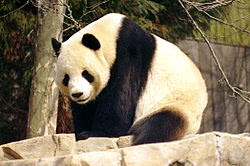
To paraphrase the foreign minister of Vietnam during the war in his conversation with Robert McNamara years later...
We were not pawns of the Chinese, we have been fighting them for a thousand years. We were fighting for our independence
If you wake up and find yourself living just outside a great expansive empire, be sure not to blink, or you'll quickly find yourself a part of it. China has officially 56 minorities with most living on the outskirts of the current incarnation. For these people, their unfortunate location has lead to a history full of conflict, whether fighting an aggressor or being in the middle of two enormous warring states. Maintaining their unique culture, customs, heritage, personality, and identity identity is a task not sneezed at.
The Naxi, centered around Lijang in the Yunnan province, are a quiet and pleasant people, for which, you wonder whether is a product of their beautiful and peaceful surrounds or in deference to the majority. With the persecution of the cultural revolution thankfully over, they find themselves in a strange new world, where tourists actually pay to see their culture and custom, albeit in that sickly sweet touristy way. Their clothing is both beautiful and intricate, albeit somewhat over utilised for the Han held cameras. The magnificent of the three pagoda's and their seemingly never ending array of temples is only matched by the enormity of the ticket price. The idyllic surrounds have seen many an expat setup shop or life to take advantage of the heavenly location. Although our time was short in both Dali and Lijang, it is clear that this is a must see place, but only in off season. The hordes of tourist is almost overbearing in Lijang and would become torturous in the height of summer.
Lounging about in the awesome hump hostel in Kunming, you quickly understand why this is (young) backpacker heaven. Great whether, good diversity of food, plenty of ex pats and backpackers fresh from Vietnam and Laos, and a night scene that encourages the excesses of the western backpacker produce many weary souls. For us, we unwound and of course had a few drinks whilst we arrange our onward tickets.





